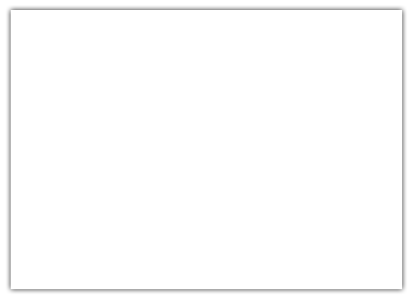


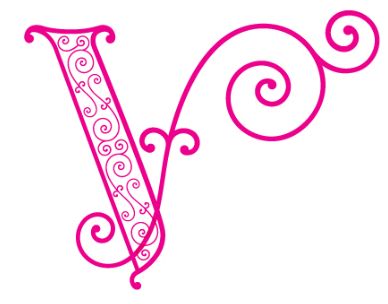
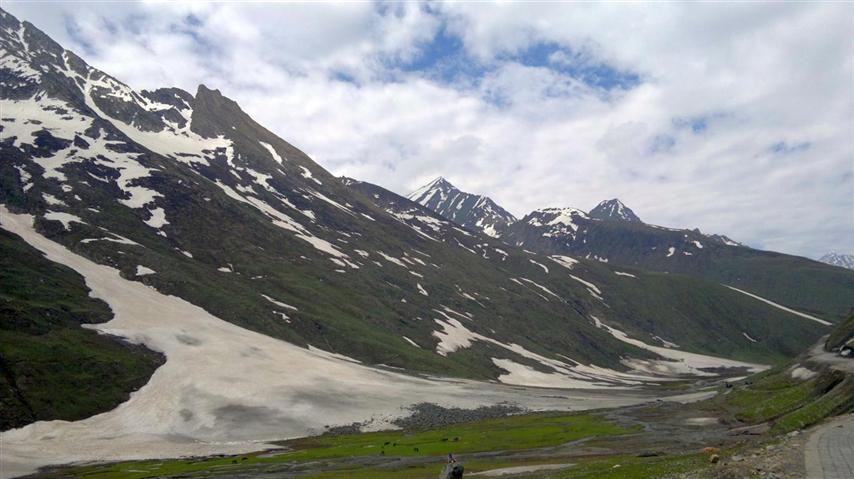
Home - Tour India - Leh & Ladakh
................................................................................................................................................................................................................................................................................................................................................................................................................................................................................................................
Leh Ladakh

Copyright © visitindia.org.in. All Rights Reserved.
Best time to visit Leh Ladakh
Travelogues/Travel Logs of Roadtrips
Hit the road with the summary guides of our trips to various places in India. Any information feel free to drop a mail at info@visitindia.org.in


Get online driving directions, route guides, weekend planners, and customised itineries. Check out a few of our favorite user road trips, then start an adventure of your own.....Explore India by Road

Find us :-
Photo tour of Delhi-Leh trip
Take a photo tour of the Leh trip of Vinod Kumar and family in June 2011 where he traversed the rugged route in his safari. The route highlights the changing topography well captured in its various shades. The self driven trip from Delhi - Srinagar - Gulamrg - Sonamarg - Kargil - Leh - Pangong lake - Nubra valley - Manali - Delhi is very well explained in the travelogue section with distances and timings marked.





Treks
July to Spetember, you can take a 10 day long trek of the Markha valley. Another trek spanning 20 days is from Lamayuru to Darcha in Himachal, this route crosses the Zanskar valley and the two high passes beside medows and monasteries. Another trek for 12 days takes you from sarchu to Tsomoriri through one of the desolate areas of Rupshu. These route so not have any villages and camps are to be set up. You can also undertake small treks to the villages nearby like Sabo etc.
River rafting
From Karu to Spituk and Spituk to saspol white water rafting takes place but it is meant for professionals only.
The popular rafting points are from Phey to Nimo and also from Upshi to Kharu or from Upshi to Nimo. Water levels remain high during the month June to late August, which is the best season for fascinating rafting expeditions
The landscapes of Leh Ladakh considered to have the most extreme enviroments, Leh with its gorgeous mountains, arid desert terrain sprinkled with Buddist monastries and the poplar trees is a very sparsely populated place. The natural beauty of the place is comlimented with the generous and colourful people. The most attractive feature of the landscape of Ladakh are the Buddist monastries situated on the isolated hillock in the vicinity of villages these aesthetically pleasing, archiecturally interesting monastries provide the focus for the faith of the highly religious Buddist people.
Some of the major monastrieslike Lamyaru, Alchi, Hemis and Thiksay have a wealth of artifacts, architecture and culture and form the backbone of some of Ladakh's most popular festivals talking of which the biggest and most famous of the monastic festivals that is frequented by tourists and locals alike is that of hemis which falls in late June or the first half of July.
Best Time to visit - July - August
July to August is the peak season as the temperature is around 20-25 degrees. The climate may be scorching hot in the sun and chilly in the shade. It is advisable to wear layers of clothes at this time preferably in cottons, topped up by a wind cheater. As the heat during sunshine is high you may take off the layers but in shade will have to wear them on. Carry a rich nourishing cream and put them often as the skin tends to become dry and flaky. Have a good lip balm and a sunscreen. It is advisable to have a wide brimmed hat along with sunglasses.
Off season time is from May-June and Sept to Oct. The temperature at this time range from 20 to 4 degrees and chances of dipping even lower. At this time trekking, river rafting, festivals, and excursions around will not be possible. The crowd will be lesser at this time.
How to reach
By Air - Leh Kushok Bakula Rinpoche Airport (Leh) - It's one of the highest airport in the world at 10,682 ft above sea level. Flights from Leh take off and land in the morning. The airport is connected to Delhi, Jammu & Srinagar.
By Rail - No Rail head to Leh
By Road - There are taxis and buses available to move within the small town.
Drive by Road
Ladakh is known as the land of Passes and the 434 kms long Srinagar - Leh road is a bliss to explore the mountain terrain of mighty Himalayas. The three passes we encounter enroute are Zojila, Namikala and Fotula. This road is open only from May to October, rest of the seasons it is closed due to snowfall. Army convoys are encountered in the routes and we have to give side for the convoy to pass as it is the road that carriers supplies to Leh.
On this route we encounter all the challenges in driving as steep gradients, hairpin bends, no workshops, petrol refill available at select places hence we have to plan our refuel in advance. A SUV, four wheel drive would be preferable for the journey but people in smaller cars and bikes too make it. Kargil is the major stop in the route and there are many hotels here, preferably book your dates in advance with the hotel. Kargil is more of a halting location than a tourist town. The Kargil memorial can be seen enroute to Kargil.
The other route for Leh is from Himachal Pradesh ie Manali. This route is 473 kms long and is open from July to September. The only petrol pump on this route is between the Rohtang pass and The district headquarters Keylong. There are no villages in the route it is barren and the topography gets changing, the locals have set up camps as resting areas at Sarchu, Phang and Brandi.
How to reach
- Inner line permits are required to visit Nubra Valley, Pangong Tso, Tso Moriri, Beyond Upshi, Dha Hanu.
- The permits are received for 7 days and it requires one working day.
- Always carry your ID cards as random checking is possible.
- The travel agents arrange for the permit mostly.
Tips for Leh
- It is always advised to consult your local doctor before the trip
- Avoid leather items and digital cameras in temples
- While visiting a monastery women are requested to be well covered and men must wear full length pants
- To visit Pangong lake prior permission is required hence you are to carry photo identification card as proof of identity
- Have plenty of fluids and water
- At certain camps and hotels you may have to share a common toilet
- On arrival please rest for 24 hrs to acclimatize to the low oxygen levels.
- Avoid smoking and alcohol for the first 36 hours because it slows down the process of acclimatisation.
- It is advisable to carry cans of oxygen with you for further higher altitudes as you travel out of Leh.
Shopping in Leh
An assortment of curios are available here some are made in China and some in Kashmir brought down to be sold here. You may pick up Tibetan turqouise, pearls, yak bone beads, prayer wheels, thangkas, apricots, wooden tea bowls, brocades, flasks etc. The main areas of shopping are the Main market, Moti market, Tibetan market and Fort road.
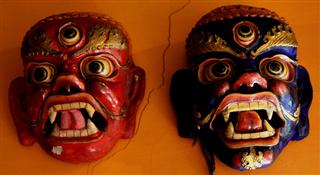
10yearitch.com
- Stupas & Gompas in Leh
- Leh Palace
- Likir
- Alchi
- Tso Moriri
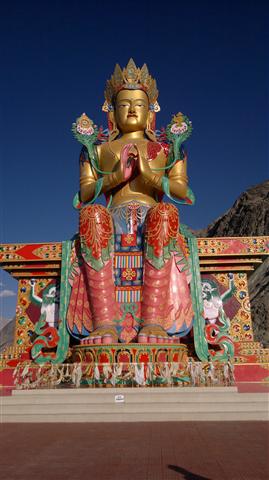

Leh was an important stopover on trade routes which spread along the Indus Valley between Tibet, Kashmir India and China for centuries. The main goods carried were salt, grain, cashmere wool, indigo, silk yarn etc.
There are references here and there that the Chinese knew of a trade route through Ladakh to India as early as as the 1st and 3rd centuries. The Tang dynasty was the earliest although we know very little about them. The sculptures in Shey just 15 kms from Leh is traced to this period.
Ladakh had been culturally ‘Tibetanised’ in the 9th century after which Buddhism originally arrived rooting to India which is coveyed by the temple form of architecture in Alchi. Even in Buddhism emerged various sects, ultimately the Tibetan Gelukpa gaining prominence in the 14th century under Tsongkhapa.
Ladakh’s greatest king, Sengge Namgyal gained riches by plundering gold reserves from Tibet and established the capital at Leh. Ladakh was independant which was later annexed by the Jammu maharajas. After Independance Ladakh is semi-autonomous sub district of Jammu and Kashmir. Refferd as little Tibet this is once of the undisturbed Tantric Buddhist societies of earth. Tourism was allowed here in 1974, which was not so popular till now. Cystal blue skies are the main attraction here but a sudden storm and mud slide can cause harm as the cloud burst in 2010.
Various routes converge in Leh, one from Manali - Rohtang - Sarchu - Lahaul and Leh, while the other goes from Srinagar - Sonmarg - Zojila - Kargil - Leh. From Baltistan there were two difficult routes - the main on ran up the Shyok Valley from the Indus, over a pass and then down the Hanu River to the Indus again below Khalatse. The other ran from Skardu straight up the Indus to Kargil and on to Leh



